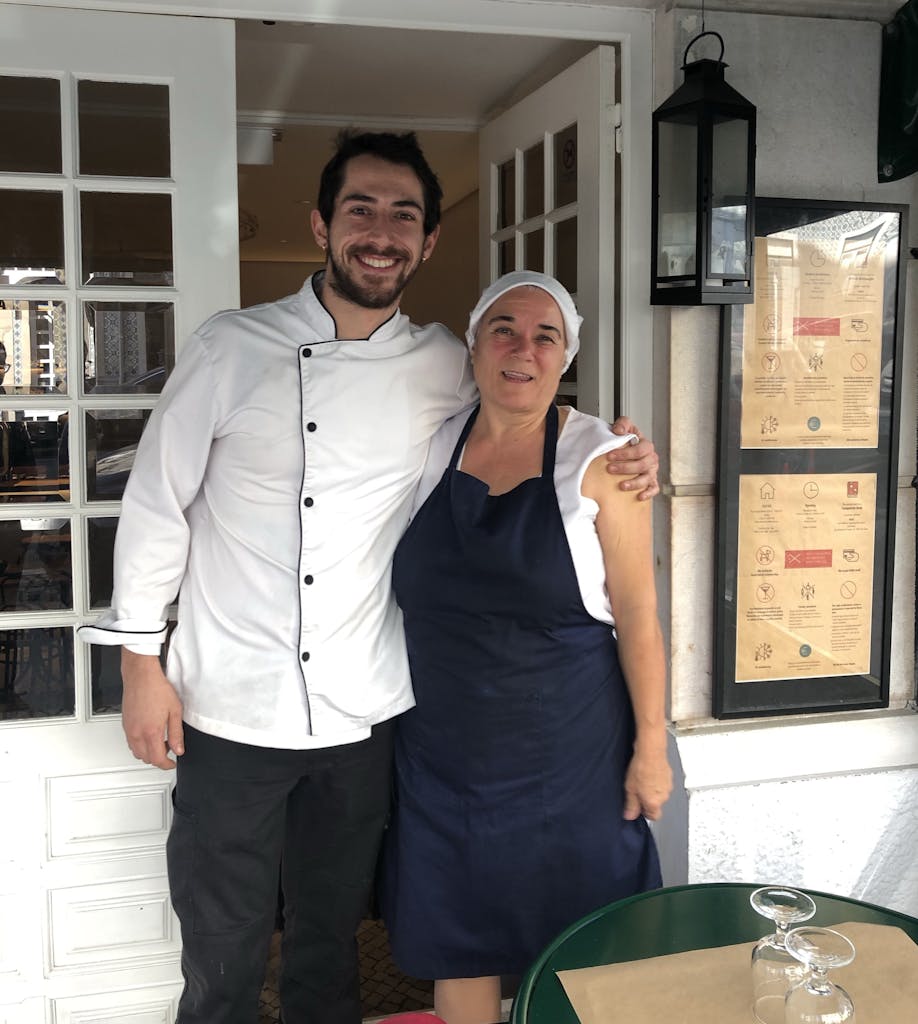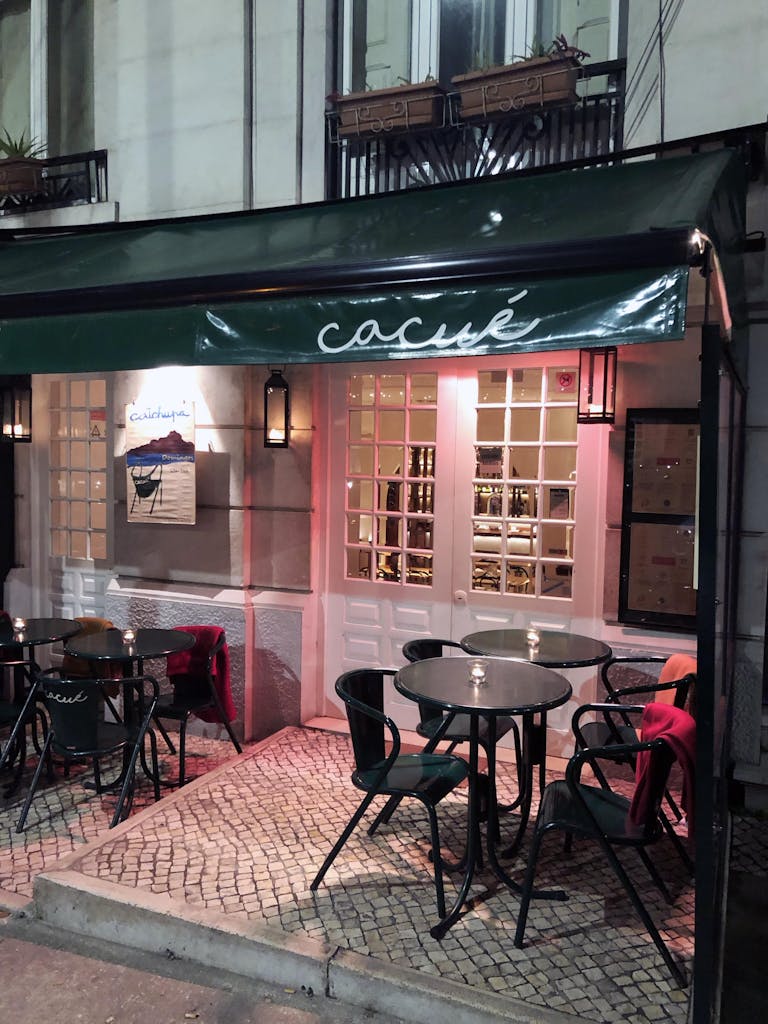Want to Experience the Best Portuguese Food? Tour Portugal’s Iconic Tascas
The busiest time of the day for José Saudade e Silva is that blur between 1–2 p.m., when the lunch orders just won’t stop. There is bacalhau à minhota — classic Portuguese food, comprised of salt cod with onions and fried potatoes — coming out of the kitchen. Bochechas de porco (braised pork cheeks) are ready to leave the stove. Açorda de gambas (bread-based stew with shrimp and cilantro) is already on one of the tables.
Saudade e Silva, 29, is the chef and owner at Cacué, a small restaurant in Lisbon’s office district of Picoas, just a few blocks from Calouste Gulbenkian Museum and Eduardo VII Park. In 2017, he took over the space, which, for almost 25 years, was called O Tomás, and improved its appearance with lighter wood on the walls and a counter in front of the kitchen. Some things he didn’t change: He kept on Dona Rosa, a cook who worked at the original restaurant from day one. And he has barely touched the prices, with daily dishes costing between 10 and 12 euros.

What are tascas?
In Portugal, tascas are small, popular family restaurants, where locals eat traditional, filling Portuguese food daily, especially at lunch, and pay modest prices. Cacué is a tasca —neither a French bistro nor an Italian Osteria. Saudade e Silva has kept the former restaurant’s spirit alive, which was a favorite among locals, not only for the convivial atmosphere, but also for its inexpensive daily specials.
Like Cacué, there are a number of other unpretentious tascas scattered all over Lisbon. Their histories date back to the early part of the 20th century. Back then, most were owned by Galician immigrants and sold cheap wine, coal and petiscos (small sharing dishes). They were half-tavern, half-social places, where underpaid factory workers went for a drink after a tiring day; for many, this was their only connection to an idea of home. Migrants from other regions in Portugal followed suit and later opened their own tascas. Because of their specialties — such as bifana or prego (pork and beef sandwiches), croquetes (pan-fried, minced cow’s tongue in bread crumbs) and pataniscas (cod fritters) — and late closing hours, this type of Lisbon restaurant became the favorite hangout place for bohemians, artists and writers.

What to expect at a tasca
Today these restaurants are still central to the urban dynamics — both in the routines of the locals and in the growth of tourism. Brand-name five-star hotels popping up in Lisbon neighborhoods, along with billboards for luxury apartments protruding from deteriorated buildings, might be signs of rising prices in Portugal’s capital city. Yet these transformations — a consequence of the city’s revival after the economic crisis — did not preclude a resurgence of affordable restaurants that serve delectable and traditional Portuguese food. These places still offer honest meals to the vast majority of the population and have become social and gastronomical reference points, both equally appealing to anyone looking for well-cooked Portuguese food.
At Cacué, Saudade e Silva even continued the culture of the day’s special — the idea that there is at least one dish, on any given day, that is always ready to serve. Sometimes it’s favas com entrecosto (fava beans with spareribs), and other times it can be linguadinhos fritos com arroz de tomate (tiny fried sole with tomato rice). This routine helps create habits that have locals returning again and again: It makes them feel connected to that place, and generates culinary landmarks along the way. Some regulars visit their favorite spot for lunch every day, while some only go when the daily special is their favorite dish.

Where to find tascas today
Many of these local restaurants have now closed, sadly. Aging and tired owners — some in the business for 40 years — decided to close doors. The skyrocketing of the city’s real estate prices impacted families who sacrificed their lives to preserve these neighborhood places, and the emergence of international dining trends in Lisbon made some restaurateurs and chefs replace tascas with fashionable restaurants.
Other spots — such as Taberna Sal Grosso or Petisco Saloio — were opened by trained chefs and cooks, following a new budget-priced dining trend that aims to revive the city’s tascas. The new owners bring a touch of refinement, by replacing the paper tablecloths and beautifying the interiors, but the Portuguese traditional cuisine and spirit continues to thrive.
If you want to enjoy a homey lunch in Lisbon, or just share some excellent petiscos, tascas continue to be your safe haven. Visit Cacué, or other spots such as Toscana Casa de Pasto or Zé da Mouraria, for an authentic experience, where everyone feels good regardless of their career position or favorite sports team.
Curious to learn more about Lisbon’s tascas and the food culture in Portugal’s capital city? Check out S.A.L.T. Lab Radio’s podcast episode below, Saving Lisbon’s Restaurant Soul, to hear Zé Saudade e Silva talk to S.A.L.T. Director Adam Sachs about his quest to preserve the tradition of tascas. Plus, journalist Miguel Andrade unpacks Portugal’s colonial past, and Adam shares adventures of shopping for tinned fish, enjoying a steak sandwich for the ages and visiting the House of Eels.


















